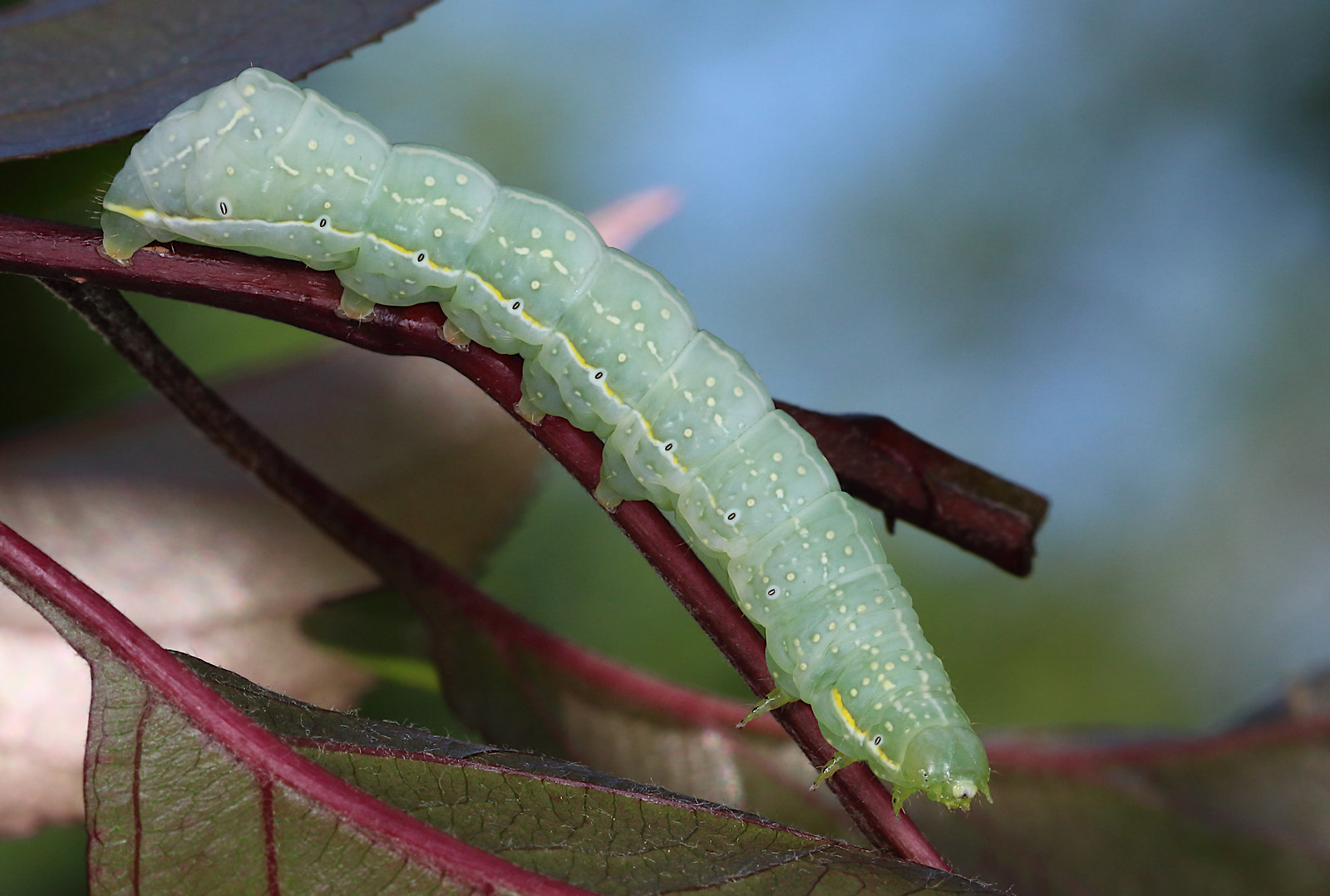First up is the delicately colored larva of the copper underwing moth, Amphipyra pyramidoides.
 Copper underwing caterpillar by Mark Sturtevant, on Flickr
Copper underwing caterpillar by Mark Sturtevant, on FlickrMany insects will mimic bird droppings as a way to hide in plain sight. One of my favorites for this is the moth called the beautiful wood nymph, Eudryas grata. They habitually hold out their forelegs, and passing familiarity with the model instantly tells us that they are going for splattered bird droppings.
 Beautiful wood nymph by Mark Sturtevant, on Flickr
Beautiful wood nymph by Mark Sturtevant, on FlickrOne of our most common species is the Eastern tiger swallowtail (Papilio glaucus). This picture was taken in perfect light.
 Eastern tiger swallowtail by Mark Sturtevant, on Flickr
Eastern tiger swallowtail by Mark Sturtevant, on FlickrReturning to caterpillars, one that I certainly would like to see again is the larva of the lappet moth. I can't ID the species, but it is either the genus Atolype or Tolype. What is interesting about them is they are flat caterpillars. By pressing their legs out to the side and flattening down their hairs to fill in their shadow, they simply ... disappear. The blue tubercles are really an artifact of the camera flash, and in natural light they are not visible. While photographing this one, even though I knew exactly where it was, I regularly lost it!
I said I would like to see these again, but how could I? They can't be seen!
 Lappet moth caterpillar by Mark Sturtevant, on Flickr
Lappet moth caterpillar by Mark Sturtevant, on Flickr Lappet moth caterpillar by Mark Sturtevant, on Flickr
Lappet moth caterpillar by Mark Sturtevant, on FlickrAmong the other techniques used to enhance survival is mimicry. I close with the raspberry crown borer moth (Pennisetia marginata), which is an excellent mimic of a Yellowjacket wasp.
 Raspberry crown borer by Mark Sturtevant, on Flickr
Raspberry crown borer by Mark Sturtevant, on FlickrOf course it is well understood that mimicking bees and wasps is to discourage bird predation. But an interesting hypothesis that has been floated a while ago is that insect mimicry of bees and wasps is a way to avoid predation by social wasps like hornets, Yellowjackets, and paper wasps. You see, those insects are avid hunters of all sorts of insects in order to provide meat for their growing larvae. Every time you visit your back yard, or go out into nature, you will see those insects actively searching every stem and leaf. They are not spending all their time foraging on flowers!
